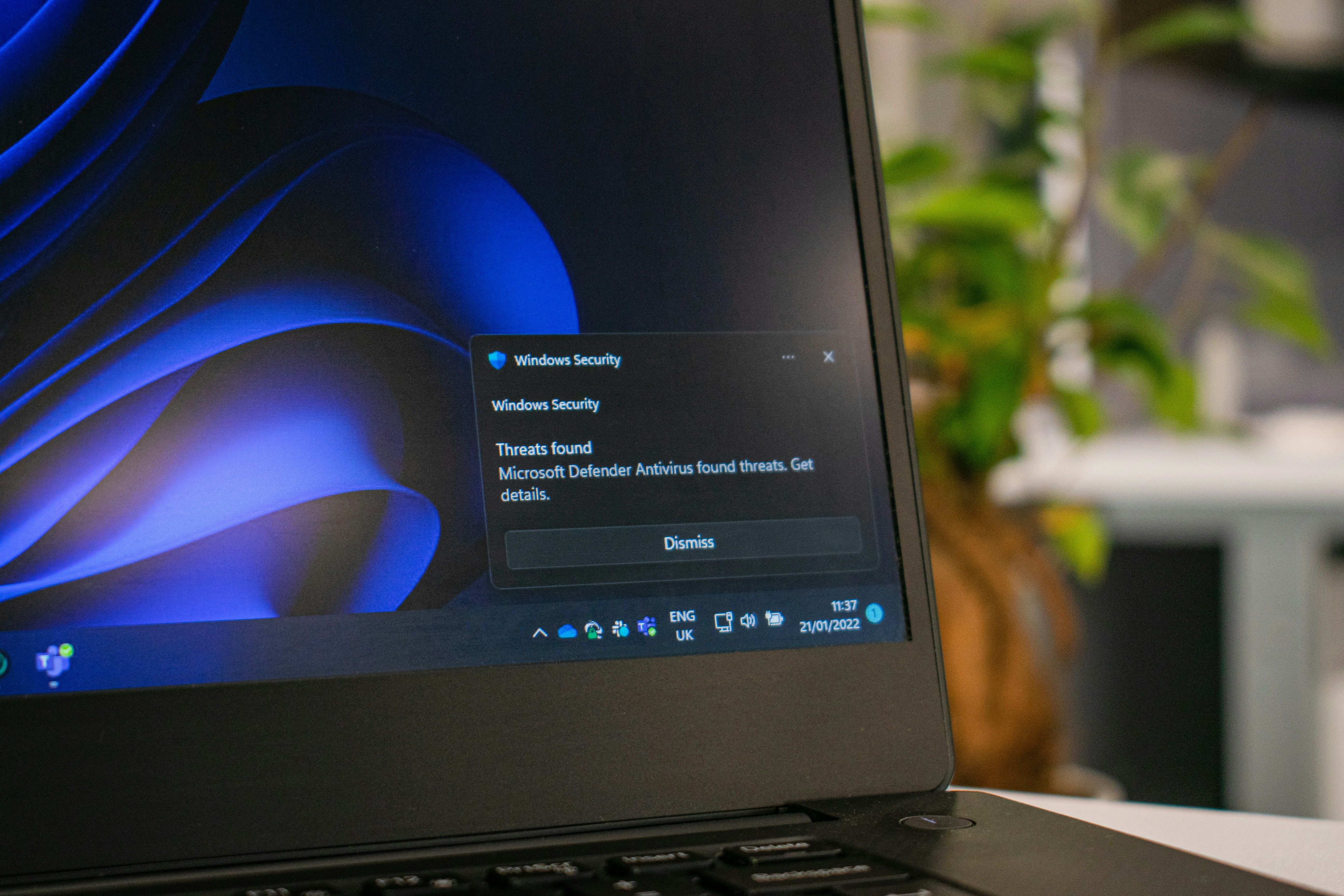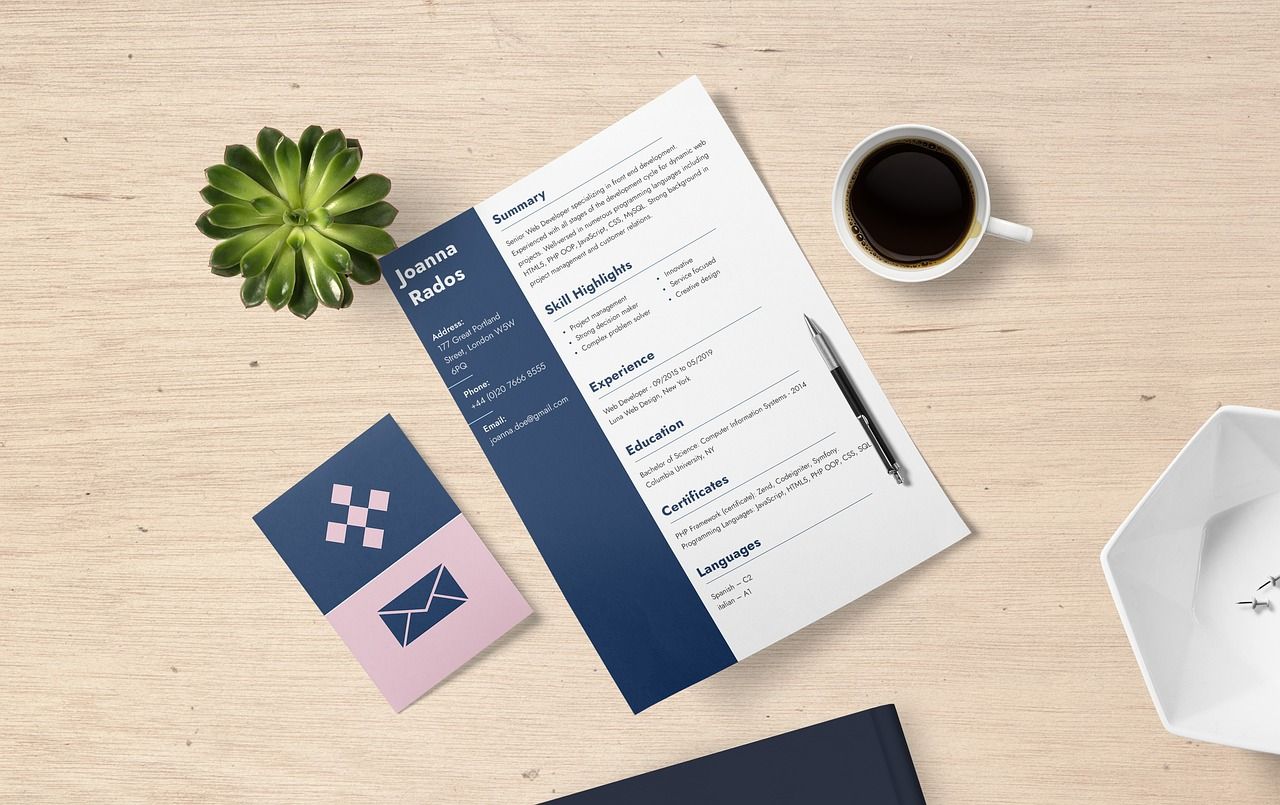Huntr Blog
How to Optimize Your Resume for Applicant Tracking Systems (ATS)
August 12, 2024
Optimizing your resume for Applicant Tracking Systems (ATS) is not just a nice-to-have—it's essential. ATS software helps employers manage the influx of resumes they receive by scanning, sorting, and ranking applications based on specific criteria.
If your resume isn’t optimized for ATS, it may never be seen by a human recruiter, no matter how qualified you are. Don’t worry though, this comprehensive guide will walk you through the best practices for crafting an ATS-friendly resume to increase your chances of landing your dream job.
Organize your job search
Huntr helps you track your job applications and keep your job search organized, all in one place.
Understanding ATS and Its Importance
Before diving into optimization strategies, we need to understand what an ATS is and why it matters. ATS software is used by many companies to streamline the hiring process, especially when they receive a high volume of applications.
It scans resumes for specific keywords, formats, and criteria set by the employer. Resumes that don’t meet these criteria are often automatically filtered out. Given that up to 75% of resumes are rejected by ATS before reaching a recruiter, optimizing your resume is crucial.

The Role of ATS in the Hiring Process
To appreciate the importance of ATS, consider its role in the hiring process. Employers are increasingly relying on ATS to save time and reduce the administrative burden of sifting through countless resumes.
ATS software doesn’t just scan for keywords—it also analyzes the structure and formatting of your resume to determine its relevance to the job posting. Companies investing in nearshore software development services often build or customize ATS platforms to suit regional hiring needs and compliance requirements. Technology experts play a key role in optimizing these platforms for performance and usability.If your resume is not ATS-compatible, it might be rejected before it even reaches a hiring manager’s desk. Therefore, understanding how ATS works and tailoring your resume accordingly can significantly impact your job search success.
Use the Right Keywords
1. Identify Relevant Keywords
The first step in optimizing your resume for ATS is to identify relevant keywords. These are the specific resume skills, qualifications, and experiences that are important for the job you’re applying for.
Start by carefully reading the job description and noting any repeated terms or phrases. Use these keywords in your resume, but ensure they fit naturally into the content.
2. Integrate Keywords Naturally
While it’s important to include keywords, avoid keyword stuffing. ATS software is designed to recognize this tactic and may penalize your resume for it. Instead, integrate keywords seamlessly into your resume.
For example, if the job description mentions “project management,” include specific instances where you’ve demonstrated this skill in your work experience or skills section.
3. Match Keywords to Job Requirements
To further improve your resume's chances, ensure that the keywords you include closely match those in the job listing. If a job posting uses the term "digital marketing," don't use "online marketing" as a substitute unless you also include the exact term. The closer your language mirrors the job posting, the better your resume will perform in an ATS.

How to Optimize Your Resume Format
1. Use Standard Formatting
ATS software can struggle with complex formatting. Stick to a simple, clean resume format to ensure it can be easily scanned. Use standard section headings like “Work Experience,” “Education,” and “Skills.” Avoid using images, graphics, or tables, as these can confuse the ATS and cause important information to be missed.
2. Choose a Common Font
Use a common, easy-to-read font like Arial, Times New Roman, or Calibri. These fonts are more likely to be recognized by ATS software. Try not to use any fancy or unconventional fonts that might not be readable by the system. They may look cool, but aren’t quite ATS-friendly.
3. Save Your Resume as a Word Document
While PDFs are often preferred for their professional appearance, ATS software sometimes struggles with this format. To ensure your resume is easily read, save it as a .doc or .docx file. However, check the job application instructions as some employers may still prefer PDF formats.
4. Maintain a Consistent Structure
Consistency is key when formatting your resume. Ensure that your headings, bullet points, and dates are aligned and uniformly spaced. A well-structured resume not only helps ATS software accurately parse your information but also makes it easier for recruiters to read once it reaches them.
5. Avoid Headers and Footers
Although headers and footers can make a resume look professional, ATS software often overlooks the information contained in these sections. Avoid placing critical information, such as your contact details, in these areas to ensure the ATS captures everything accurately.
Tailor Your Resume for Each Job
1. Customize Your Resume for Each Application
One-size-fits-all resumes are less effective in today’s job market. Tailor your resume for each job you apply to by incorporating the specific keywords and skills mentioned in the job description. This customization shows that you’ve taken the time to understand the job and highlights your relevant qualifications.
2. Focus on Relevant Experience
While it’s important to include all relevant experience, be selective about what you highlight. Focus on the roles and responsibilities most pertinent to the job you’re applying for. This approach ensures the ATS recognizes your suitability for the position.
3. Adjust Your Summary and Objective
Your resume's summary or objective statement is another opportunity to tailor your resume. Modify this section to align with the job you're applying for, incorporating the title of the position and key skills. This alignment can help catch the eye of both ATS software and human recruiters.

Highlight Your Skills
1. Create a Skills Section
Include a dedicated skills section in your resume. This section should list your key competencies, using the same language found in the job description. This makes it easier for the ATS to match your resume with the job requirements.
2. Use Both Hard and Soft Skills
Employers look for a combination of hard and soft skills. Hard skills are specific, teachable abilities like “data analysis” or “SEO optimization.” Soft skills are more subjective and include attributes like “communication” and “leadership.” Incorporate both types of skills into your resume to show you’re a well-rounded candidate.
3. Group Skills by Category
To make your skills section even more effective, consider grouping your skills into categories such as "Technical Skills," "Management Skills," and "Communication Skills." This organization can help ATS software better understand your qualifications and make your resume more readable to human reviewers.
4. Include Keywords in the Skills Section
In addition to the rest of your resume, the skills section is an ideal place to incorporate important keywords. By listing skills that align with the job description, you increase the likelihood that your resume will pass through the ATS screening.
Quantify Your Achievements
1. Use Numbers and Metrics
Whenever possible, use numbers and metrics to quantify your achievements. Instead of saying you “increased sales,” specify that you “increased sales by 20% over six months.” This specificity helps the ATS and hiring managers understand the impact of your work.
2. Highlight Key Achievements
Under each role in your work experience section, highlight 2-4 key achievements. Use bullet points for clarity and start each point with a strong action verb. This format not only makes your resume more readable but also emphasizes your resume accomplishments.
3. Showcase Career Progression
If you've been promoted or taken on increasing levels of responsibility in your previous roles, make sure to highlight this progression. ATS software and recruiters both value candidates who demonstrate a clear trajectory of growth and achievement.
4. Include Industry-Specific Metrics
If your industry has particular metrics that are valued (e.g., customer satisfaction scores, project completion rates, etc.), make sure to include these in your resume. Industry-specific metrics can enhance the relevance of your resume to the job you're applying for.

Maintain Data Privacy and Compliance
1. Protect Your Personal Information
When optimizing your resume, be mindful of the personal information you include. ATS systems often store and process your data, so ensure you’re only sharing necessary details. Include your name, phone number, email address, and LinkedIn profile. Avoid sharing sensitive information like your full address or social security number.
2. Use Reliable Security Tools
To protect your personal data, consider using reliable security tools when submitting your resume online. For instance, using tailored software such as antivirus for Mac or Windows, or downloading a VPN, can better safeguard your information from cyber threats. Ensuring your data is secure not only protects you but also demonstrates your commitment to privacy and security to potential employers.
3. Be Aware of Data Protection Regulations
Understanding and adhering to data protection regulations, such as GDPR in Europe or CCPA in California, can be crucial when applying for jobs, particularly with international companies. Being aware of these laws and ensuring your resume complies with them can protect your rights and make a positive impression on employers.

Review and Test Your Resume
1. Proofread Thoroughly
Before submitting your resume, proofread it thoroughly to catch any spelling or grammatical errors. Mistakes can create a negative impression and might even confuse the ATS.
2. Test Your Resume
Some websites offer ATS resume testing services. These tools can analyze your resume and provide feedback on how well it aligns with ATS requirements. Testing your resume can help you make final adjustments to improve its chances of passing through the system.
3. Seek Professional Feedback
In addition to using online tools, consider seeking feedback from a professional resume writer or career coach. They can provide insights into how your resume might be perceived by both ATS software and human recruiters, helping you refine it for optimal results.
Consider ATS-Optimized Resume Templates
1. Utilize ATS-Friendly Templates
Many online platforms offer ATS-optimized resume templates designed to be both visually appealing and ATS-compatible. Using these templates can simplify the process of creating a resume that looks professional while also being optimized for ATS software.
2. Customize Templates for Personalization
While templates provide a great starting point, make sure to customize them to reflect your unique experience and qualifications. Personalization is key to standing out, even within the constraints of an ATS-friendly template. Customize sections, adjust wording, and ensure the template aligns with your personal brand and the specific job you’re applying for.
3. Avoid Overly Creative Designs
While creative resume designs can be visually striking, they often confuse ATS software. Stick to a clean, straightforward layout that prioritizes readability and ATS compatibility over aesthetics. Simplicity ensures that your resume's content is accurately parsed and evaluated by the ATS.

The Importance of a Cover Letter
1. Supplement Your Resume with a Cover Letter
Even though ATS primarily focuses on resumes, a well-crafted cover letter can complement your application by providing additional context to your experience and highlighting your enthusiasm for the role. Many ATS platforms also parse cover letters, so including relevant keywords here can further strengthen your application.
2. Tailor Your Cover Letter
Just like your resume, your cover letter should be tailored to each job you apply for. Reference specific aspects of the job posting, and explain how your background makes you a strong fit for the role. A personalized cover letter can differentiate you from other candidates and increase your chances of being noticed by human recruiters.
3. Use the Cover Letter to Address Potential Gaps
If there are any gaps or unusual aspects in your resume, use the cover letter to address them. Whether it's a career change, a period of unemployment, or a move to a new industry, the cover letter offers a space to explain your situation in a way that can’t be easily conveyed in your resume alone.
Following Up After Submission
1. Monitor Your Application Status
After submitting your resume, keep track of your application status. Some ATS platforms allow you to log in and check the status of your application. Regularly monitoring your status can provide insight into where you stand in the hiring process and whether additional follow-up is needed.
2. Send a Follow-Up Email
If you haven’t heard back within a reasonable timeframe (typically 1-2 weeks), consider sending a polite follow-up email. Reiterate your interest in the position, briefly restate your qualifications, and inquire about the status of your application. Following up shows initiative and can sometimes prompt a recruiter to take a closer look at your application.
3. Use LinkedIn for Additional Outreach
Connecting with the hiring manager or recruiter on LinkedIn can also be a strategic follow-up move. After applying, consider sending a brief message on LinkedIn to introduce yourself and express your enthusiasm for the role. Be sure to mention that you’ve applied through the ATS, as this shows your understanding of the application process.
The Role of Social Media in Your Job Search
1. Optimize Your LinkedIn Profile
Your LinkedIn profile is often considered an extension of your resume. Ensure that it is fully optimized, reflecting the same keywords, experiences, and skills as your resume. Consistency between your resume and LinkedIn profile can help reinforce your professional brand and make a stronger case to employers.
2. Align Your Social Media Presence
Beyond LinkedIn, consider how your other social media profiles, such as Twitter or Instagram, might be perceived by potential employers. Make sure your public profiles reflect a professional image that aligns with the job you’re seeking. This can help create a cohesive online presence that supports your application.
3. Engage with Industry Content
Engaging with industry content on social media—by liking, commenting, or sharing relevant posts—can help you stay visible to recruiters and industry professionals. Active participation in your field’s online community can showcase your expertise and enthusiasm, making you a more attractive candidate.
Final Thoughts
Optimizing your resume for Applicant Tracking Systems is a critical step in today’s job market. By implementing the resume optimization tips shared in this article, you can boost your chances at getting noticed by ATS and, ultimately, human recruiters. Remember to protect your personal information with security tools, review, and test your resume before submission, and consider the role of cover letters and follow-ups in the application process. By taking these steps, you’ll be well on your way to landing your next job opportunity. If you’re looking to build a resume, sign up for Huntr today.
Get More Interviews, Faster
Huntr streamlines your job search. Instantly craft tailored resumes and cover letters, fill out application forms with a single click, effortlessly keep your job hunt organized, and much more...
AI Resume Builder
Beautiful, perfectly job-tailored resumes designed to make you stand out, built 10x faster with the power of AI.
Next-Generation Job Tailored Resumes
Huntr provides the most advanced job <> resume matching system in the world. Helping you match not only keywords, but responsibilities and qualifications from a job, into your resume.
Job Keyword Extractor + Resume AI Integration
Huntr extracts keywords from job descriptions and helps you integrate them into your resume using the power of AI.
Application Autofill
Save hours of mindless form filling. Use our chrome extension to fill application forms with a single click.
Job Tracker
Move beyond basic, bare-bones job trackers. Elevate your search with Huntr's all-in-one, feature-rich management platform.
AI Cover Letters
Perfectly tailored cover letters, in seconds! Our cover letter generator blends your unique background with the job's specific requirements, resulting in unique, standout cover letters.
Resume Checker
Huntr checks your resume for spelling, length, impactful use of metrics, repetition and more, ensuring your resume gets noticed by employers.
Gorgeous Resume Templates
Stand out with one of 7 designer-grade templates. Whether you're a creative spirit or a corporate professional, our range of templates caters to every career aspiration.
Personal Job Search CRM
The ultimate companion for managing your professional job-search contacts and organizing your job search outreach.

